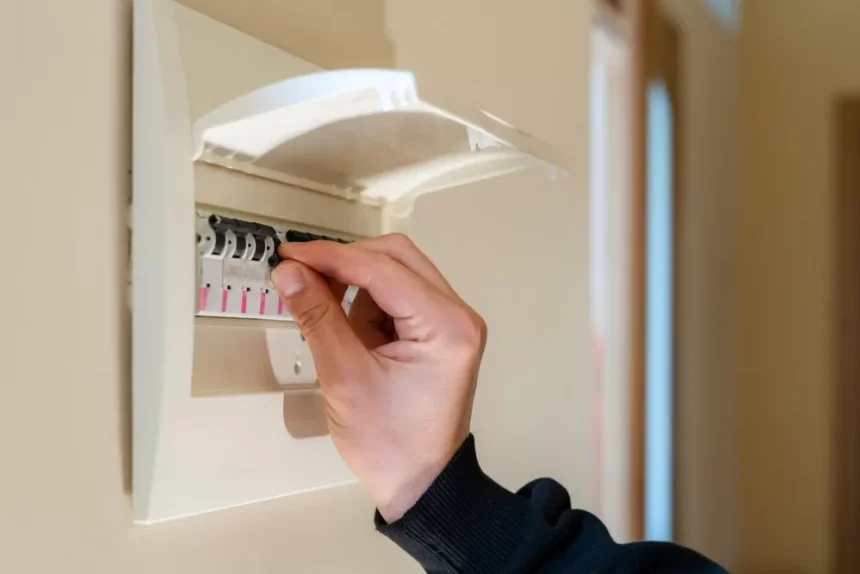Functionality goes hand in hand with aesthetics in modern homes. Hidden utilities like plumbing, electrical wiring, and HVAC systems make a living space much more comfortable for occupants. However, future maintenance and repairs require easy access to these hidden components.
This is where access panels come into play. Strategically placed panels offer discreet and easy access to hidden building components without damaging finished walls and ceilings.
A Modern Alternative Solution
Traditionally, access panels were primarily made of metal. While metal offers undeniable strength, it comes with certain drawbacks.
Metal panels are heavier to handle, leading to increased installation time and labor costs. Additionally, they are susceptible to rust and corrosion, particularly in areas prone to moisture. This can eventually compromise the panel’s integrity and aesthetics.
Plastic access panels, on the other hand, are a strong and reliable alternative for residential, commercial, and even industrial construction. Made from high-quality plastics like ABS (Acrylonitrile Butadiene Styrene) or PVC (Polyvinyl Chloride), these panels offer a unique combination of benefits:
- Lightweight: Plastic’s biggest advantage is its weight. Plastic panels are significantly lighter than metal, making them easier to handle and install, especially on ceilings. This means reduced labor costs and less strain on workers during construction.
- Cost-Effective: Plastic is more affordable compared to metal. This affordability leads to lower upfront costs for builders and contractors, making plastic access panels an attractive option for budget-conscious projects.
Durability Matters
While some might question the strength of plastic compared to metal, modern plastic access panels are surprisingly robust. They can withstand the rigors of everyday use, making them ideal for residential applications.
More importantly, unlike metal, plastic is inherently resistant to rust and corrosion. This quality makes it perfect for moisture-prone areas, such as bathrooms, laundry rooms, and kitchens. Metal panels, on the other hand, would be susceptible to rust over time in these places.
Functionality and Aesthetics
The benefits of a plastic access panel go beyond weight and durability. They are typically designed with a user-friendly installation process, often featuring a snap-lock mechanism or a simple hinge system. This design simplifies access during maintenance or repairs, minimizing disruption to residents or business operations.
Furthermore, many plastic access panels have a smooth, lightly textured surface that can be painted to match the surrounding wall or ceiling. This allows the panel to blend into its surroundings, maintaining the space’s overall design integrity.
Environmental and Safety Considerations
Modern construction practices strongly emphasize green building. Some plastic access panels are manufactured from recycled materials, contributing to an eco-friendlier building process. Additionally, the lighter weight of plastic panels reduces the overall load on a building’s structure. This can lead to less material usage throughout construction, minimizing a project’s environmental impact.
As for safety, some plastic access panels are specifically designed to be non-combustible or flame retardant, depending on the specific type and application. While not a substitute for fire-rated access panels required in particular locations by building codes, this inherent fire resistance can be an added benefit in certain scenarios.
Choosing the Right Panel for the Job
It’s important to remember that plastic access panels aren’t a one-size-fits-all solution. While they are superb in many residential and light commercial applications, certain situations dictate that metal access panels are a better choice.
For instance, in areas requiring a high fire rating due to building code regulations, metal access panels specifically designed to delay the spread of fire might be necessary.
Similarly, metal access panels might be the preferred option for heavy industrial applications where extreme durability is a major consideration.
However, for most residential and commercial construction projects, plastic access panels offer a compelling combination of strength, functionality, cost-effectiveness, and environmental benefits.
Variety Is Key
The market for plastic access panels has grown significantly in recent years. These panels are now available in various sizes, styles, and functionalities to meet the unique needs of any project. Builders and contractors can choose from access panels with concealed hinges for a more discreet look or panels with locking mechanisms for added security in sensitive areas.
Additionally, some manufacturers offer fire-rated plastic access panels for specific applications where some level of fire resistance is desired. However, they might not meet all building code requirements for fire-rated walls or ceilings.
Wrapping It Up
Plastic access panels have emerged as a highly dependable construction material. Their lightweight design, affordability, and inherent resistance to corrosion make them a great choice for builders and contractors working on residential, commercial, and even some industrial projects.
With their user-friendly installation and assorted sizes and styles, plastic access panels offer a practical and aesthetically pleasing solution for maintaining easy access to hidden utilities.
Ultimately, plastic access panels provide a winning combination of strength, functionality, value, and environmental consciousness, making them an asset for any modern construction project.






